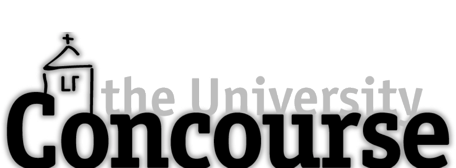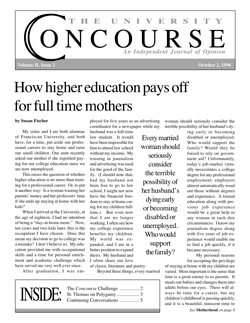Polygamy, the Natural Law and St. Thomas
by Michael Waldstein
In her lead article last issue Kathleen van Schaijik cites others as citing “adult students” at a theological institute as citing St. Thomas as writing that polygamy is permissible according to the natural law, because one man can inseminate many women. “What then? Is the moral law to be derived from biological facts? Are we beasts?” It comes as no surprise that she claims a fuller and deeper understanding of marriage and particularly of woman “as man’s companion, equal in dignity and therefore worthy of his entire self” has developed in the Church since St. Thomas. It is good to note the care with which she limits her critique to the position of the “adult students,” excepting St. Thomas himself from direct blame: “I do not know St. Thomas well enough to know what he really says on this subject.” And indeed the most important issue is not what St. Thomas really says, but what marriage truly is. I entirely agree with the article on that score. Still, the discussion carried on in past issues of the Concourse about St. Thomas as a teacher recommended by the Church impels me to set the record straight as to what St. Thomas says about marriage, and to add some reflections about the development of doctrine and the place St. Thomas ought to have in a Catholic university.
St. Thomas nowhere says that polygamy is permissible according to the natural law. The only text which has been or can be cited (Summa Theologiae, Supplementum, q. 65, a. 1) says nothing of the sort, and is not by St. Thomas besides. What the author of the Supplementum does say is, “plurality of wives is in one way against the natural law, in another not.” With respect to characteristics man shares with other animals, his argument runs, polygamy is not contrary to the natural law, while with respect to the nature proper to man as an animal endowed with reason it is. This text stands in tension with the only text in which St. Thomas himself discusses the issue extensively, Summa contra Gentiles 3.124.
The third of the seven arguments for monogamy offered in the text of St. Thomas is based on characteristics which human beings share with other animals. It is an interesting case study for “moral law derived from biological facts.” In the species of animals in which the father has no concern for raising his offspring, St. Thomas notes, both males and females tend to have promiscuous relations. “This is so among dogs, chickens and the like.” By contrast, in the species in which the father does have concern for his offspring, relations tend to be monogamous. St. Thomas finds this tendency reasonable since one male would not be able to offer enough assistance to bring up the offspring of several females. He then applies the point to the rational animal: “Since, of all animals, the male in the human species has the greatest concern for offspring, it is obviously natural for man that one male should have only one wife, and conversely.” If the male among some beasts shows a strong attachment to one female and her offspring, one would suspect that a strong desire of similar sort arises in human fathers, similar to and connected with sexual desire.
In the fourth and the fifth arguments, St. Thomas turns to a characteristic that distinguishes human beings from beasts. The characteristic he chooses to focus on in both arguments is the friendship between husband and wife in marriage. The fourth argument turns on equality as a necessary aspect of such friendship. If women could not have many husbands (which is taken as established by arguments one and two), but men could have many wives, women could not be truly friends of their husbands. They would be reduced to a servile role. St. Thomas adds, “And this argument is corroborated by experience, for among husbands having plural wives the wives have a status like that of servants.”
The fifth argument turns on the intensity and completeness of the friendship between husband and wife. It is impossible for one man to have such a friendship with several women. Again St. Thomas emphasizes the consequence of servility when friendship is incomplete on the man’s part. “Therefore, if a wife has but one husband, but the husband has several wives, the friendship will not be equal on both sides. So, the friendship will not be free, but servile in some way.” The argument seems akin to Katie van Schaijik’s reference to woman “as man’s companion, equal in dignity and therefore worthy of his entire self.”
Both of St. Thomas’s arguments “from friendship” should be read in the context of his extensive discussion of charity as the friendship made possible by the grace of Christ (see Summa Theologiae II-IIae q. 23-46; Quaes. Disp. de Caritate). If one reflects about the two arguments in this context and brings them to the current debate about the equality of man and woman, one cannot but be struck by the “personalist” corrective they can offer to the rights language in which this debate is often cast. What is violated by polygamy is not only the right of woman to equal dignity, but her and her husband’s share in the highest virtue, the virtue by which we are most united with God, charity (see Summa Theologiae II-IIae, q. 23, a. 6). One can learn much from St. Thomas on this score, even if one agrees with Katie van Schaijik that “we (as a people) have not understood [the mysteries of human sexuality and of the dignity of women] fully until recently.”
These points urge caution in speaking of “development” in theology as a linear progression to greater insight. That there has been development no one will deny. But of what sort that development is can only be seen if one knows both the point of arrival and the point of departure, in this case St. Thomas. Kathleen van Schaijik has admitted her ignorance of St. Thomas’s thought on this question. The point can be thrown into relief by the commonplace that our present generation “stands on the shoulders of giants.” To speak for myself, I am far from standing on St. Thomas’s shoulders. I am more like a boy sitting on his mother’s lap as she traces the letters in the primer.
This, I take it, is what the Church is urging us to do: to turn to St. Thomas as a teacher. I find it extremely unfortunate that the debate carried on last semester in the Concourse about the role of St. Thomas as a teacher has been dominated by the question whether or to what extent one is free to disagree with him. The attempt to twist people’s arm into holding that polygamy is in agreement with the natural law by appeal to the authority of St. Thomas is a case in point. This sort of controversy derails the true debate. The true debate, it seems to me, concerns the practical measures a Catholic institution like Franciscan University ought to take in order to follow the Church’s recommendation of St. Thomas as the “doctor communis,” the teacher of all. Clearly, if he is to be a teacher, the first question is not “Must I agree with him?” but “How can I learn from him?” This is an eminently practical question. I suggest that those who know the program of studies at the University (I do not know it well) ask whether that program enables students to come to know St. Thomas. Do the students read substantial portions of his works? Are they given substantial and sustained help to understand him? How many class sessions are used for this purpose? I submit that shifting the discussion toward such questions will bring more peace and yield more fruit.
Dr. Waldstein is President of the International Theological Institute for Marriage and Family in Gaming, Austria.


